What happens when asteroid turns to meteorite
When asteroid (formally of any size) enters Earth atmosphere it becomes meteorite. Impact releases kinetic energy of the meteorite. Below is computer modelling of Tunguska event of 1908 - (presumably) comet core explosion in the atmosphere.
Present evaluations are about 5 - 15 megatonnes of TNT depending of height. It was burst in the atmosphere, there was no surface impact, only shockwave. Just for comparison below is video of undeground thermonuclear explosion with 5 Mtonns equivalent on Nov 6 1971 in Alaska island in the depth 1800 m. Explosion caused earthquake of 6,9 magnitude.
Good example from our days is Chelyabinsk Meteorite of 2013. It was relatively small: of 15 -20 m size, with mass about 10 000 tons. Impact energy was about 500 ktons of TNT (Hiroshima bomb was only 20 kt). More than 300 people were injured (mostly from broken glass) and total damage was about 30 M dollars
Chelyabinsk impact happened close to the city with million population but real damage was minor. Probability to hit densely populated territory is no more than several %, so really dangerous threshold is about hundreds of Mtons - average energy for bodies 140 - 200 m in diameter. This is 58 Mtons bomb test, the most powerful in history (sorry, no better quality):
Such meteorite will destroy everyhing in 100 km radius.
Now what should we expect in the future?
Only asteroid whose orbit will in the future cross Earth's orbit can potentially become impactor. Problem is that (1) we have to see it; (2) measure its traectory with sufficient precision and (3) extrapolate it in the future
Before 1980 there were known only tens of such bodies and no one could come closer than 7,5 Mkm in the next 1000 years. Probability calculation had shown less than 10^-5 chances to get 100 Mtons impact in the next decade.
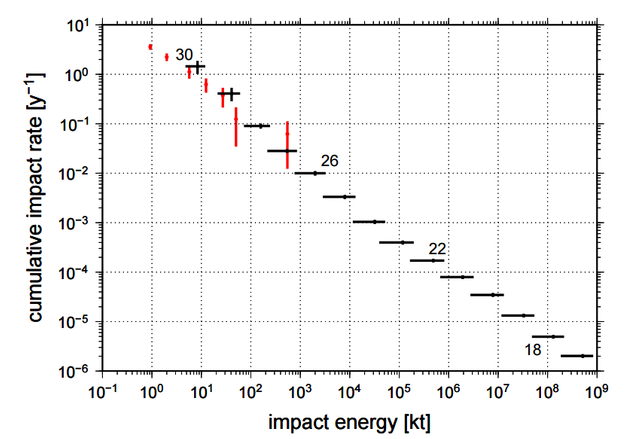
Image:NASA
Everything changed in XXI century: new telescopes, image sensors and computer processing show totally different picture:
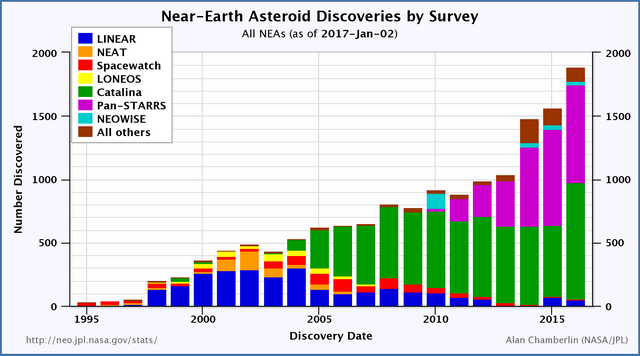
Image: Wikipedia
With more or less precise map it becomes more reasonably, instead of Armageddon probability, to evaluate probability of death from specific asteroid. Among thousands near Earth objects let's pick about 10%, whose orbits are close than 0,05 a.u. from Earth orbit (7,5 M km) and size of the body must be more than 100 -150 m.
First results came in 2004: NASA said that asteroid Apophis 99942 (BTW, cute number ;) will hit Earth in 2029 with chances 1 to 233. However more precise calculations excluded impact:
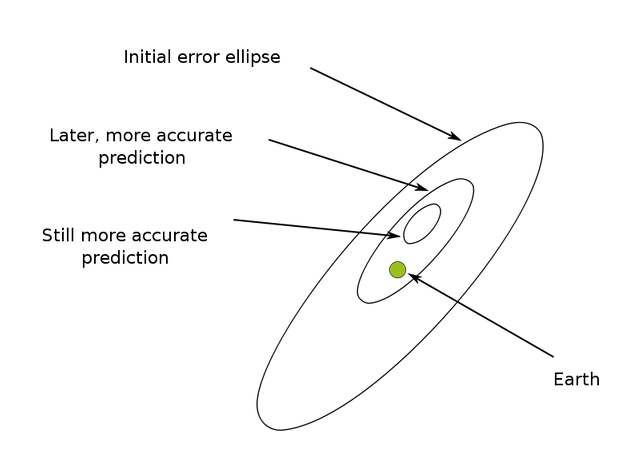
Image: Wikipedia
So for the last 30 years number of known near Earth asteroids increased from about 50 to 15 000. Of them 1763 are considered as potentially dangerous. Is it many or not?
After NEOWISE Telescope NASA has re-evaluated number of asteroids model quantity:

Image: NASA/JPL
Picture shows situation at 2012.
New researches, especially in the field of synthetic modelling allow to calculate how many asteroids are already discovered:
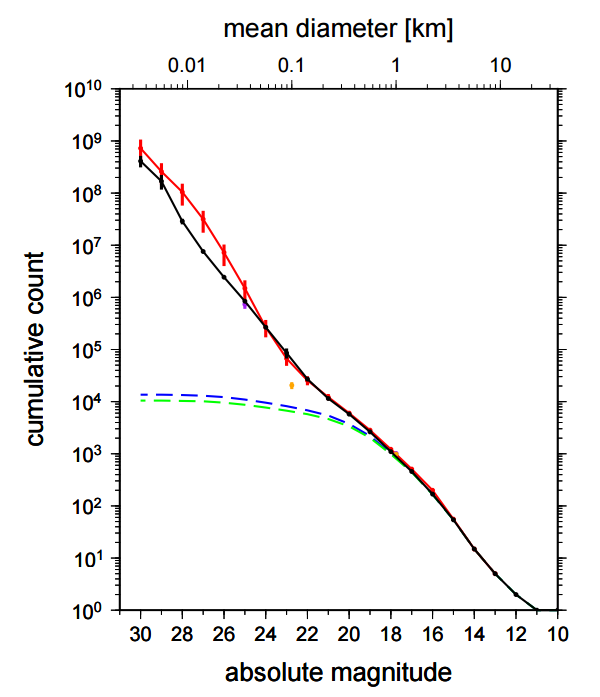
Red and black curves - modelling quantities of different sizes on near Earth orbits. Blue and green - already discovered.
Black curve from graph as a table:
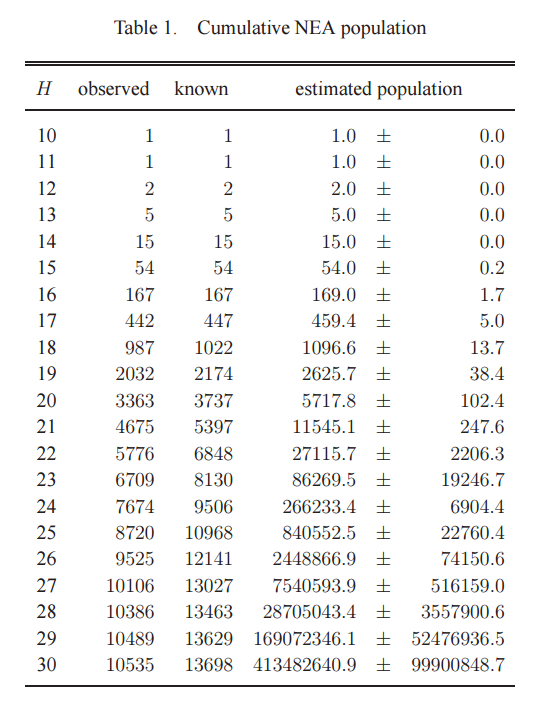
In the table asteroid sizes given in H - absolute star magnitudes for Solar System objects. With this formula we can recalculate H in sizes. Conclusion: We know more than 90% near Earth objects more than 500 m in size and about half of objects of Apophis size. For sizes 100 - 150 m known are about 35%.
But observations continue. Future telescope LSST which is under construction in Chile will have 8 meter mirror and 3,2 Gigapixel camera. Being launched in 2020 it will define orbits of almost 100% of all dangerous asteroids.
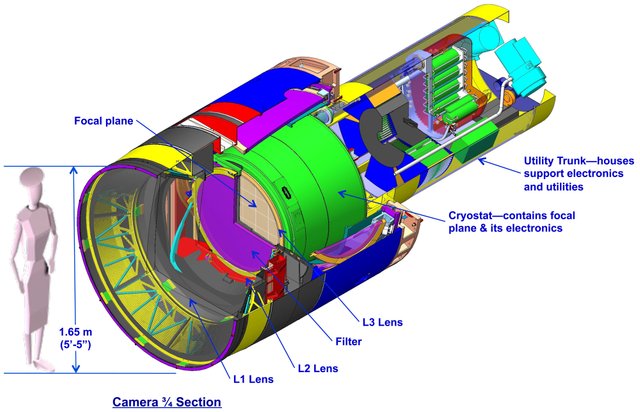
Image: Wikipedia
Does it mean that we are safe now? NO! There is whole class of asteroids on internal (relative to Earth) orbits in resonance 1:1 - it is very difficult to observe them from the Earth. Another very dangerous class (potentially very powerful impactors) - comets with long periods and high velocity, which can be discovered only 2 -3 years before collision. But in the next few years we'll have real database of majority dangerous objects.
Fascinating, thanks for sharing!
I know you mention where you found each of your images, but in the future, it'd be great if you could add a link to your image sources.
Thank you!
Hmm... Those balls look like dwarf planets, not asteroids.. ^^